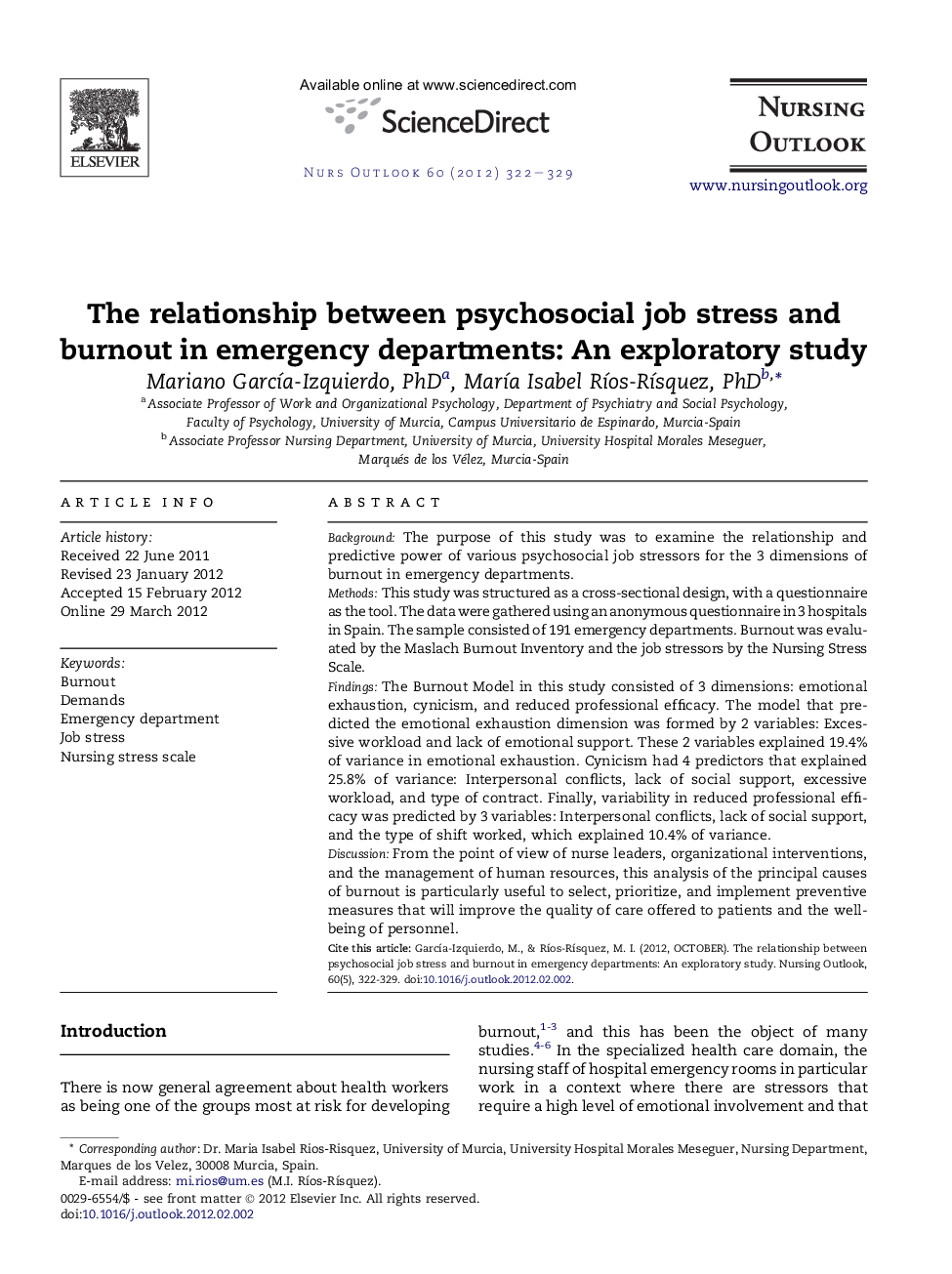| Article ID | Journal | Published Year | Pages | File Type |
|---|---|---|---|---|
| 2672244 | Nursing Outlook | 2012 | 8 Pages |
BackgroundThe purpose of this study was to examine the relationship and predictive power of various psychosocial job stressors for the 3 dimensions of burnout in emergency departments.MethodsThis study was structured as a cross-sectional design, with a questionnaire as the tool. The data were gathered using an anonymous questionnaire in 3 hospitals in Spain. The sample consisted of 191 emergency departments. Burnout was evaluated by the Maslach Burnout Inventory and the job stressors by the Nursing Stress Scale.FindingsThe Burnout Model in this study consisted of 3 dimensions: emotional exhaustion, cynicism, and reduced professional efficacy. The model that predicted the emotional exhaustion dimension was formed by 2 variables: Excessive workload and lack of emotional support. These 2 variables explained 19.4% of variance in emotional exhaustion. Cynicism had 4 predictors that explained 25.8% of variance: Interpersonal conflicts, lack of social support, excessive workload, and type of contract. Finally, variability in reduced professional efficacy was predicted by 3 variables: Interpersonal conflicts, lack of social support, and the type of shift worked, which explained 10.4% of variance.DiscussionFrom the point of view of nurse leaders, organizational interventions, and the management of human resources, this analysis of the principal causes of burnout is particularly useful to select, prioritize, and implement preventive measures that will improve the quality of care offered to patients and the well-being of personnel.
